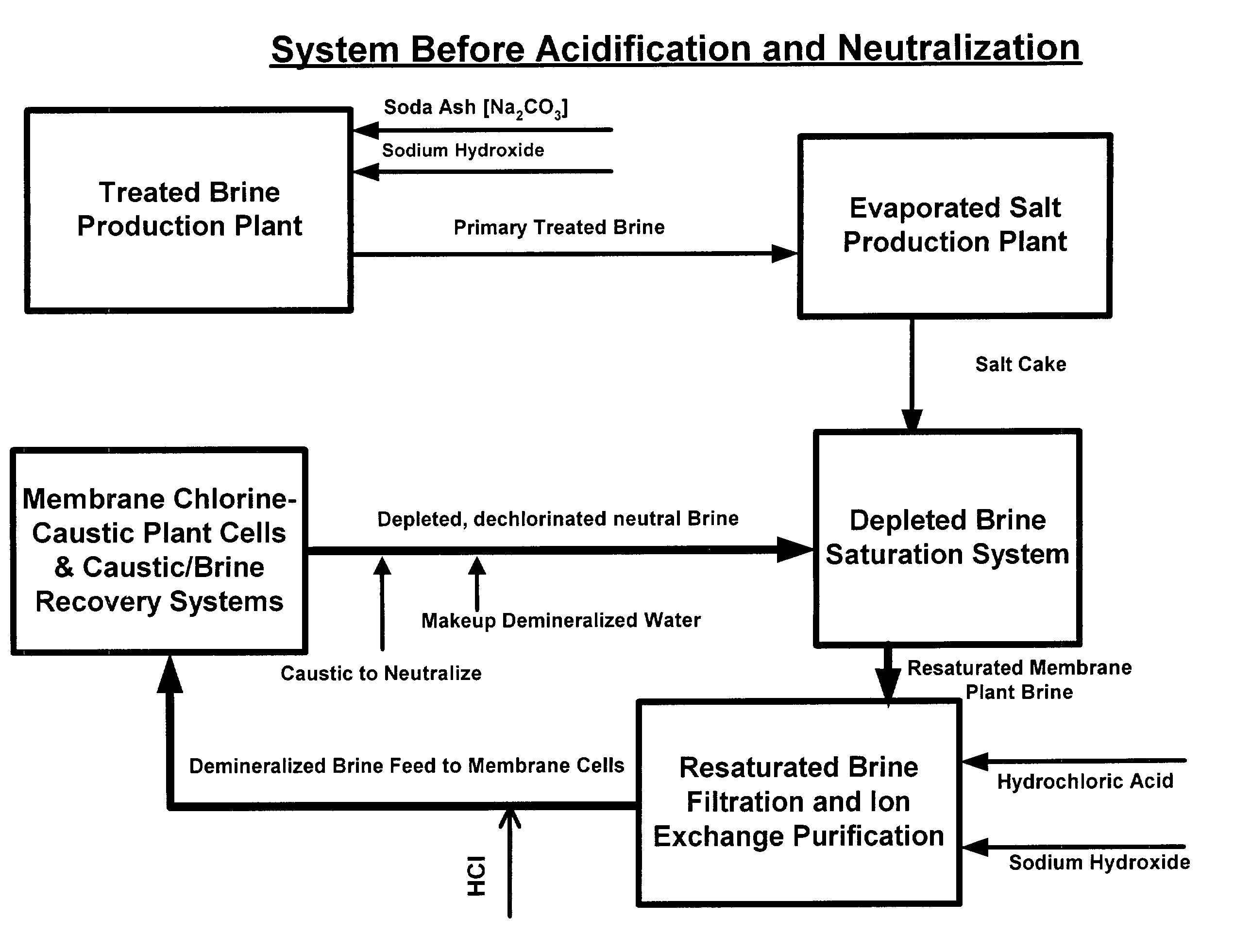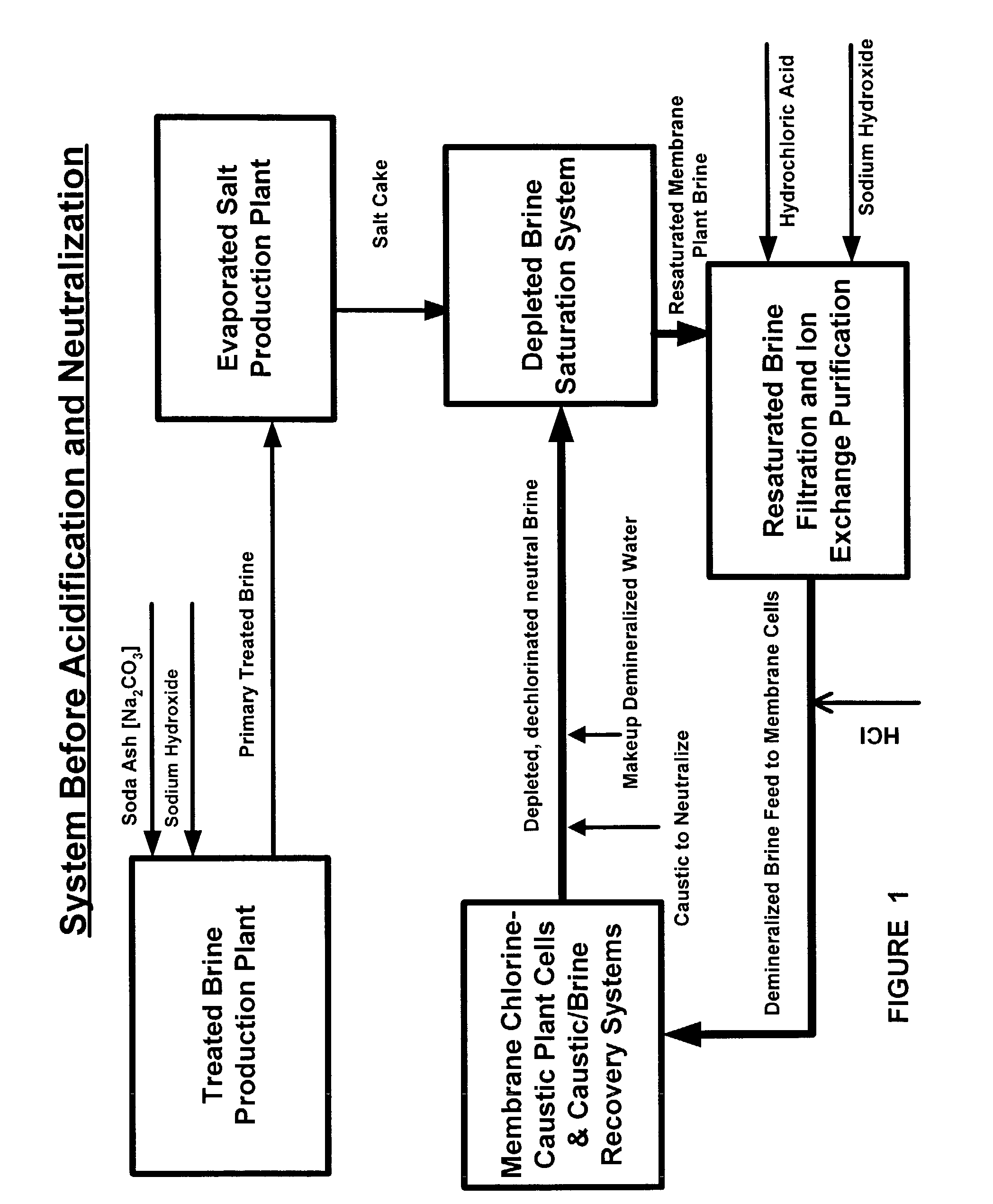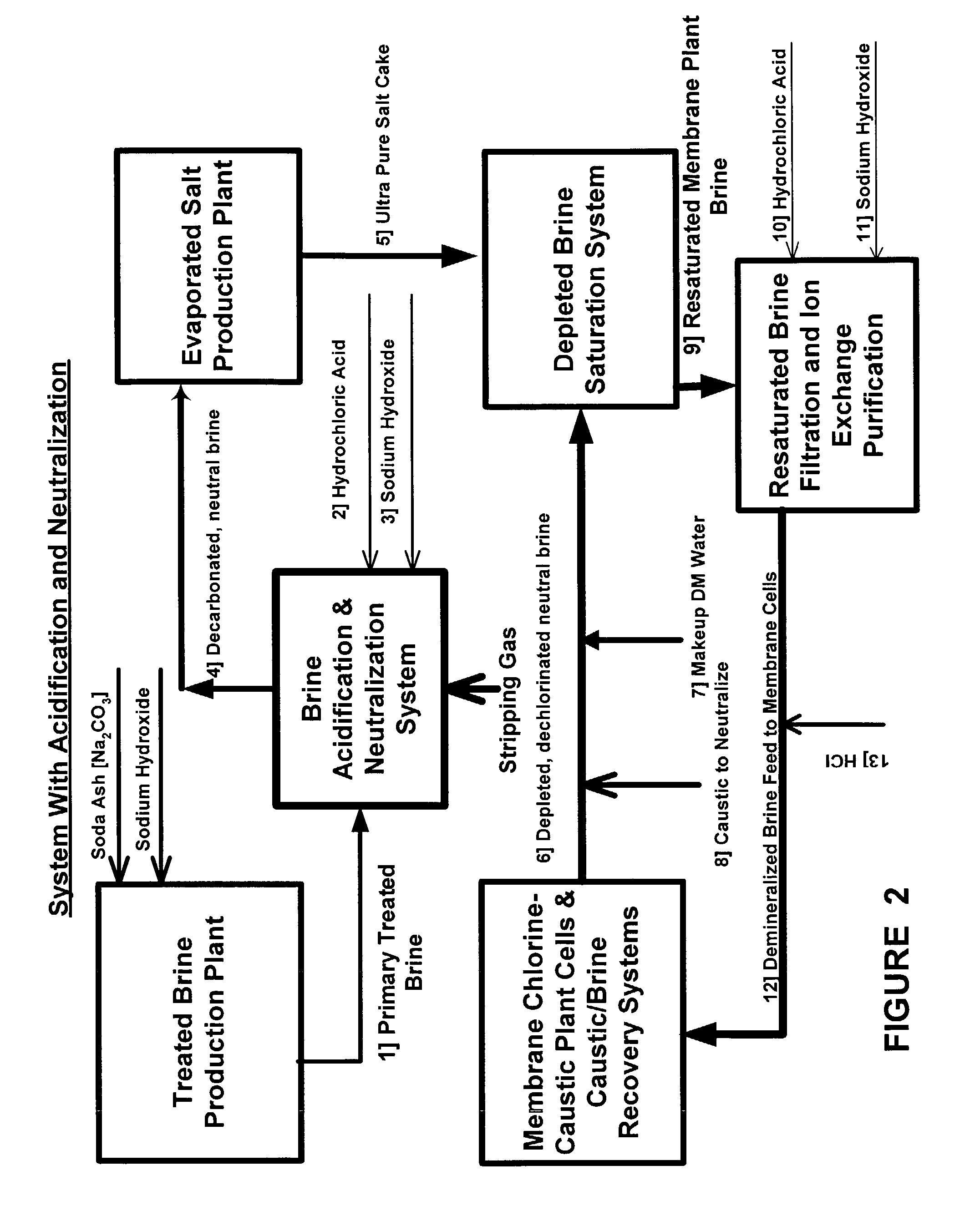Production of ultra pure salt
a production method and technology of ultra-pure salt, applied in the direction of hydrogen sulfide, separation process, alkali metal carbonate, etc., can solve the problems of increasing costs, reducing the total amount of calcium plus other metals, and limited use of ion exchange systems. achieve the effect of reducing operating and material costs
- Summary
- Abstract
- Description
- Claims
- Application Information
AI Technical Summary
Benefits of technology
Problems solved by technology
Method used
Image
Examples
Embodiment Construction
[0027]From the foregoing description of those figures depicting this invention and the following discussion, it is shown below that there are many advantages over the prior art disclosed or technology employed commercially in addition to the major advantage of producing ultra pure salt containing near zero to 500 parts per billion calcium ions rather than 1000 to 5000 ppb as is currently produced. Among the other advantages are as follows:[0028]In the feed system of the evaporator, the treated brine is pre-heated in a series of liquid-liquid heat exchangers and deacrated in packed stripping columns. With rising temperature, further reaction causing calcium carbonate to precipitate from the brine fouls the heaters and stripping columns with solids. These heating units must be acid washed as often as every other day, sometimes every day. Cleaning is effected by temporarily bypassing the fouled heater or deaerator and acid washing it to dissolve the carbonate. This is costly requiring ...
PUM
| Property | Measurement | Unit |
|---|---|---|
| Fraction | aaaaa | aaaaa |
| Fraction | aaaaa | aaaaa |
| Acidity | aaaaa | aaaaa |
Abstract
Description
Claims
Application Information
 Login to View More
Login to View More - R&D
- Intellectual Property
- Life Sciences
- Materials
- Tech Scout
- Unparalleled Data Quality
- Higher Quality Content
- 60% Fewer Hallucinations
Browse by: Latest US Patents, China's latest patents, Technical Efficacy Thesaurus, Application Domain, Technology Topic, Popular Technical Reports.
© 2025 PatSnap. All rights reserved.Legal|Privacy policy|Modern Slavery Act Transparency Statement|Sitemap|About US| Contact US: help@patsnap.com



